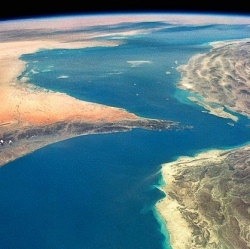
Right now it’s easy to think of NASA’s glory days as being behind it. China and Europe are sending rockets to space stations, private industry is creating space tourism and NASA’s space shuttle program has gone the way of the dodo. Even the Kepler Space Telescope is slowly, but surely, going down in flames.
Yet all is not lost for the ailing U.S. space agency. Quietly, in a lab just to the north of Seattle, NASA and its partner Tethers Unlimited are working on something stupendous. For a good long while, rumors and whispers have made the news concerning NASA’s testing of how 3D printing might work in zero gravity. Now we know why: NASA is planning to construct the spacecraft of tomorrow with multi-armed robotic, 3D printing spiders.
The robots are called SpiderFab and are designed to be capable of maneuvering themselves through space and printing with a number of polymers and materials. Not only will the SpiderFab ‘bots cut construction costs for NASA, but constructing spacecraft outside the pull of gravity will allow for much larger instruments to be built. And CEO of Tethers Unlimited, Rob Hoyt sounds almost as exited as we are about the prospects of constructing bigger, better spacecraft in orbit:
“This radically different approach to building space systems will enable us to create antennas and arrays that are tens-to-hundreds of times larger than are possible now, providing higher power, higher bandwidth, higher resolution, and higher sensitivity for a wide range of space missions."
Hoyt went on to emphasize that SpiderFab is not quite ready for deployment yet, but that with the help of a recent $500,000 infusion from NASA, he is confident that it will become reality soon:
“Once we’ve demonstrated that it works, we will be well on our way towards creating football-field sized antennas and telescopes to help search for Earth-like exoplanets and evidence of extraterrestrial life."
We’re not sure if we’re misreading the signs, but what with NASA planning on harvesting asteroids for materials, 3D printing moon bases and now constructing new, massive spacecraft from orbit, the future of the U.S. space program is looking more and more wild by the day.
